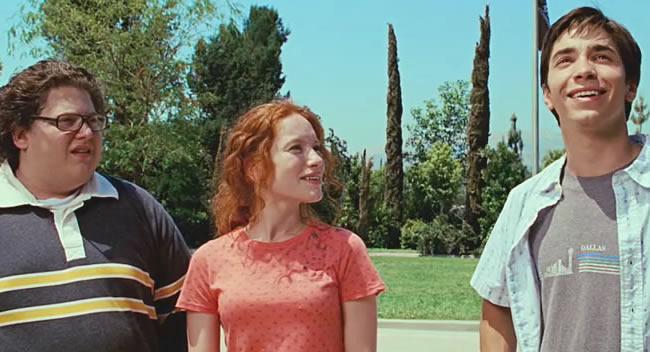《拍电影的英文》免费在线播放-全集剧情片-免费电影网

Introduction to Filmmaking
Filmmaking is a multifaceted art form that combines storytelling, visual aesthetics, and technical prowess. It is a collaborative effort that involves various professionals, from directors and screenwriters to cinematographers and editors. This intricate process culminates in a motion picture that can evoke emotions, challenge perceptions, and entertain audiences worldwide.
##The Script: The Foundation of a Film
Every great film begins with a compelling script. The script serves as the blueprint for the entire project, outlining the story, characters, and dialogue. Writers spend countless hours crafting a narrative that is not only engaging but also feasible to translate onto the screen. This stage often involves multiple drafts and feedback from peers and mentors. A well-structured script is essential, as it guides the entire filmmaking process from pre-production to post-production.
##Pre-Production: Planning is Key
Once the script is finalized, the pre-production phase begins. This stage includes casting actors, scouting locations, designing sets, and assembling a crew. The director plays a pivotal role in this process, working closely with producers and department heads to ensure that the vision of the film is realized. A detailed shooting schedule is created, outlining what scenes will be filmed on which days. This meticulous planning is crucial to stay within budget and adhere to timelines.
##Casting: Bringing Characters to Life
Casting is one of the most significant aspects of filmmaking. The right actor can breathe life into a character, bringing depth and authenticity to the role. Auditions are held to find the perfect fit, and sometimes even big-name stars are considered. Casting directors and producers analyze each candidate’s ability to convey emotions and connect with the story. The chemistry between actors can also impact the film's overall success, making this process even more critical.
##Production: The Heart of Filmmaking
As production kicks off, the crew assembles on set, and the real magic begins. Filming can be an intense and often chaotic experience, requiring everyone to work in harmony to capture each scene. The director oversees the entire process, guiding actors and making crucial decisions on camera angles, lighting, and sound. Each shot is meticulously crafted, using various techniques to achieve the desired visual style. This phase can last anywhere from weeks to months, depending on the film's scale and complexity.
##Cinematography: Crafting Visual Storytelling
Cinematography is a vital component of filmmaking, as it shapes the visual language of the film. The cinematographer, or director of photography, collaborates with the director to create the film’s aesthetic. This includes selecting camera angles, framing shots, and determining lighting. The choice of colors and textures can evoke specific emotions, setting the tone for each scene. Masterful cinematography can elevate a film from good to extraordinary, leaving a lasting impression on audiences.
##Editing: The Art of Assembly
After filming wraps up, the raw footage enters the editing room. This process is where the film truly comes together. Editors sift through hours of material, selecting the best takes and piecing them together in a coherent narrative. This stage involves not only cutting and arranging footage but also adding sound effects, music, and transitions. Editing is an art form in itself, as it defines the pacing and rhythm of the film. The final product should resonate with viewers, maintaining their engagement from start to finish.
##Post-Production: Adding the Finishing Touches
Post-production is a crucial stage that adds the finishing touches to the film. This includes sound design, color correction, and visual effects. Sound designers create the auditory landscape, enhancing the atmosphere and emotional impact of scenes. Color correction ensures that the visual tone is consistent, while visual effects can add elements that were not captured during filming. This stage requires attention to detail, as every aspect must align to create a seamless viewing experience.
##Distribution: Sharing the Film with the World
Once the film is complete, the next step is distribution. Filmmakers must find a way to reach their target audience, whether through theatrical releases, streaming platforms, or film festivals. Marketing plays a significant role in this phase, as it helps generate buzz and attract viewers. Successful distribution can make or break a film, determining its financial viability and cultural impact. Filmmakers often navigate complex negotiations to secure the best deals for their projects.
##The Impact of Filmmaking on Society
Filmmaking is not just an art form; it is a powerful medium that can influence society. Films have the ability to shed light on important issues, spark conversations, and inspire change. They can challenge societal norms and promote empathy by allowing viewers to see the world through different perspectives. As filmmakers continue to push boundaries, the medium also evolves, reflecting the complexities of contemporary life.
##Conclusion: The Future of Filmmaking
The world of filmmaking is ever-changing, driven by technological advancements and shifts in audience preferences. As new tools and platforms emerge, filmmakers are presented with exciting opportunities to tell their stories in innovative ways. The essence of filmmaking, however, remains the same: the desire to connect with audiences and share narratives that resonate on a human level. As we look to the future, the possibilities for storytelling in film are limitless.
